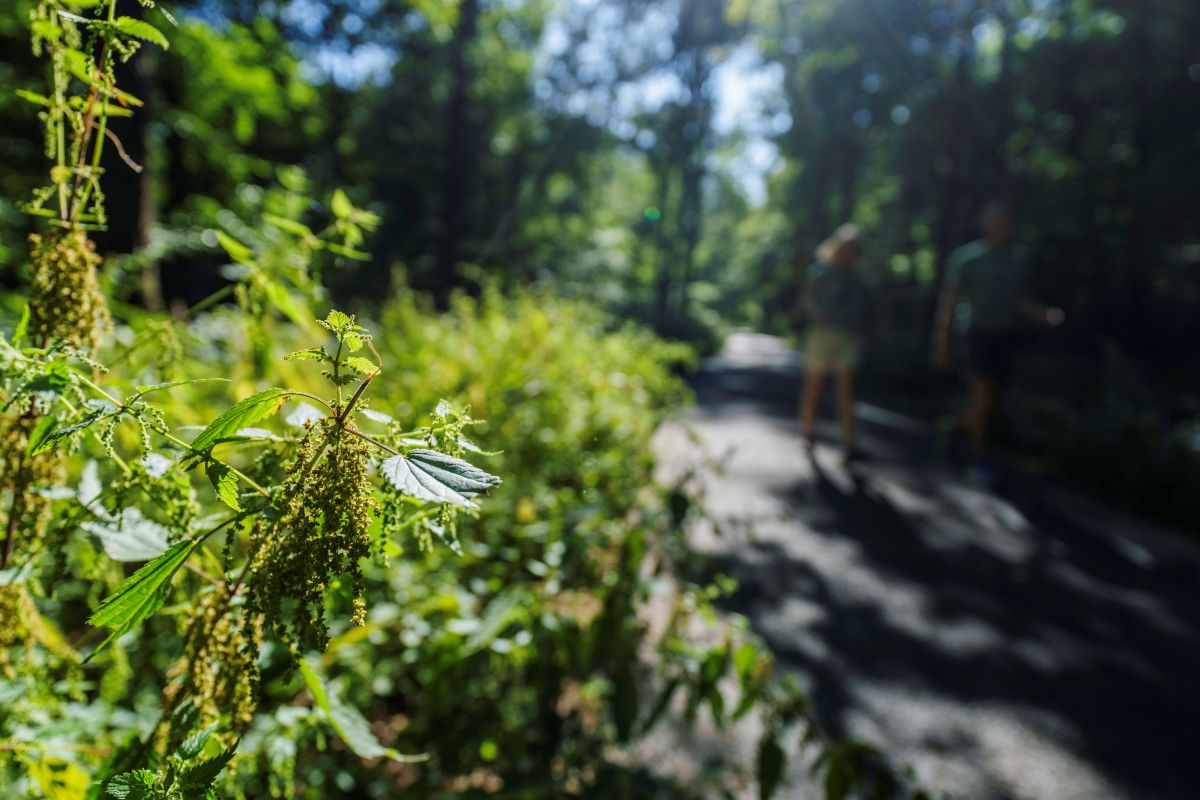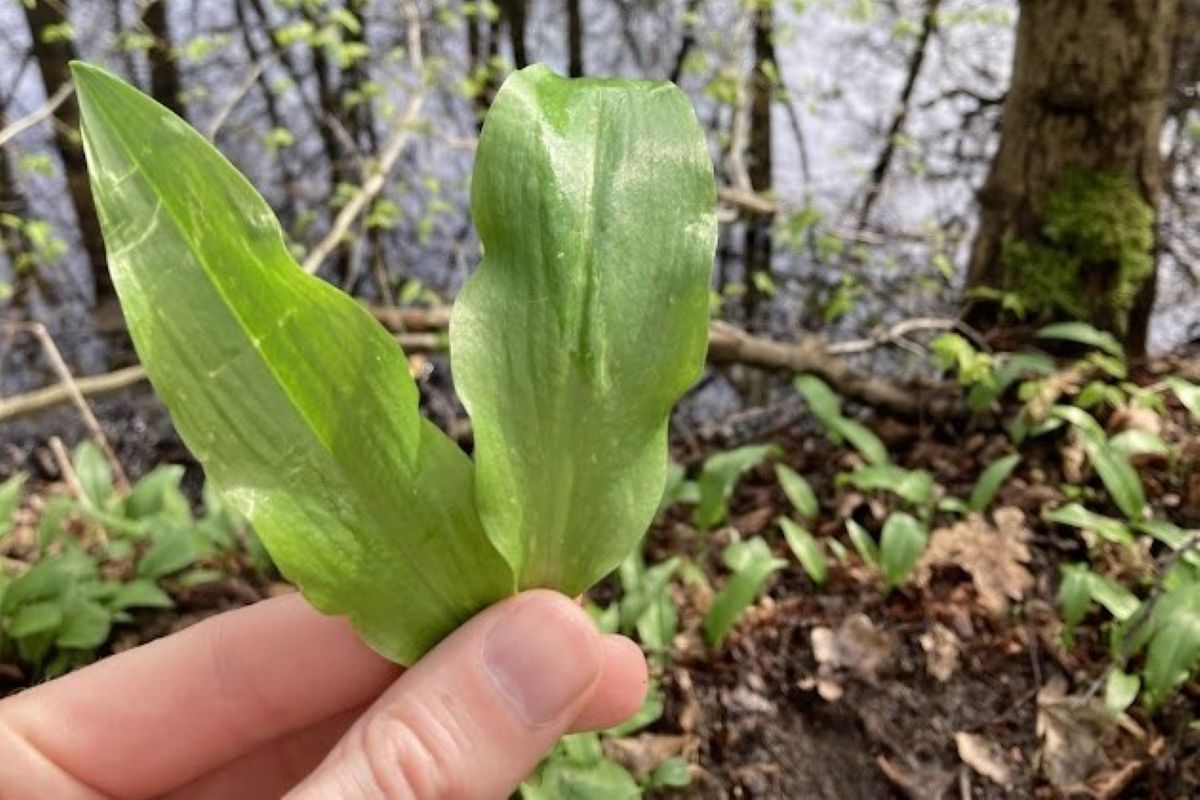Foraging for edible plants can be a fun way to connect with Germany’s nature and traditions. Here are some of the herbs you can find, harvest and eat in spring.
We all recognise the appearance of spring flowers as a promise of brighter, warmer days to come. But for some seasonal chefs and nature lovers, it’s also a reminder to get outside and take advantage of the freshly sprouted treats that are freely found in nature.
Foraging, or seeking out and harvesting wild edibles, is a beloved tradition among German epicureans and outdoor enthusiasts alike.
In the autumn, you’ll hear more about Pilzsämmler, or mushroom collectors, and in the summer there are various fruits and berries to be found. But in the spring, nature’s bounty comes mostly in the form of leafy greens and wild herbs.
From edible weeds popping up in your front yard (or the nearest grassy field) to wild herbs that you’ll have to hike around a bit to find, here are some of the spring greens that Germans like to forage and eat at this time of year.
Dandelions (Löwenzahn)
You might see a dozen dandelions every day, but did you know they’re one of the most nutrient dense greens you can eat?
Every part of the dandelion plant is edible, and it’s a particularly good source of iron, calcium, manganese, potassium, carotenes, and inulin. Dandelion is also said to be good for promoting healthy liver function.
Among the easiest ways to consume dandelion is to harvest the leaves and sauté them with some oil and garlic. You can also eat them fresh in a salad or on a sandwich, but you can expect them to have a bit of a bitter kick when eaten raw. Spring is the best time to harvest dandelion leaves as the fresh leaves are more tender and a bit less bitter.
READ ALSO: Seven signs that spring has arrived in Germany
If you’re feeling a bit more ambitious you can dig up dandelion root, to be roasted and eaten like a carrot or used for tea. Dandelion flowers can also be boiled down to make a flavoured syrup. Or, adventurous home-brewers may want to try their hand at making dandelion wine.
Here are some dandelion recipes to get you started.

Stinging nettle is seen on the side of a path. New-growth leaves can be harvested for salads or making tea. Photo: picture alliance/dpa | Andreas Arnold
Stinging nettle (Brennnessel)
Casual tea drinkers in Germany will have likely come across Brennesseltee, or stinging nettle tea, in the market aisles. But to level-up, you could try harvesting your own nettle leaves in a field or forest area nearby.
Advertisement
READ ALSO: Herbal tea and sick leave – An American’s ode to the German attitude towards health
Nettle leaves can also be eaten, after being eaten or dried, and are a great source of iron as well as A, C, K and B vitamins. They’re also thought to help detoxify the body and have anti-inflammatory effects.
Of course, as the English name warns, they can deliver a sting if they come in contact with your skin. So sensitive foragers may want to wear gloves and long sleeves when foraging. Otherwise you’ll want to carefully grab the leaves only with your finger tips to try and avoid the sting. (That said, there is some evidence that the sting itself also has medicinal effects.)
Once the leaves have been boiled or dried, they’ll lose their sting and are safe to eat.
New growth leaves harvested in the spring are often thought to be the best. Some say it’s best not to harvest nettles after they’ve started producing seeds at the end of summer.
Use fresh or dried leaves for tea, or flash boil the leaves and use them as you would other cooked leafy greens. Here’s an extensive list of recipe ideas for inspiration.
Advertisement
Wild garlic and onions (Bärlauch / Wunder-lauch)
Wild garlic – also called Ramsons in English, or Bärlauch in German – grows in shady patches of low-land forests across the country.
Wild garlic bears little resemblance to the garlic bulbs you’re used to seeing in the grocery store, but you can recognise it by its unmistakable garlic smell, which should be obvious when you pinch a leaf.

Wild garlic can be found in shady forested low-lands around Germany. Photo by Paul Krantz.
Its leaves can add a mildly spicy kick to fresh salads and its stalks can be chopped up and used in a similar way to garlic. You can also finely chop leaves and stems (or grind them up in a blender) to make pesto, or add the puree to melted butter and let it re-solidify to make your own herbal butter (Kräuterbutter).
In the same plant family are wild onions, which can be called Wunderlauch, among other names, and may be found in similar environments. As opposed to wild garlic leaves, wild onion leaves are cylindrical – looking similar to spring onions or chives.
Wild garlic and onion season tends to come in mid-March to April in Germany.
Tips for foraging in Germany
Should you feel inspired to try foraging yourself, there are a few things to know.
Foraging in Germany is not allowed in parks, nature reserves (Naturschutzgebiet) or on private property. (You may also want to avoid public spaces in urban areas that are near to busy streets or walking paths.)
If it’s your first time, it’s best to go with someone who has a bit of foraging experience. Unlike with mushrooms, there are not many highly toxic plants that you need to worry about, but you still want to make sure you know what you’ve found. What’s more, an experienced forager may help guide you toward places where you are more likely to find what you’re looking for.
Advertisement
Lastly, make sure not to over-harvest when foraging. A good rule of thumb is to seek out places where these plants are in abundance, and only take a couple leaves or plants from an area before moving onto the next one.
An excellent resource for foraging in Germany is Mundraub.org (Mund raub means mouth robbery), which has an interactive map showing foraging sites for herbs, fruits, berries, nuts and more.
READ ALSO: Six spring festivals to mark the changing of the seasons in Germany
(Except for the headline, this story has not been edited by PostX News and is published from a syndicated feed.)

